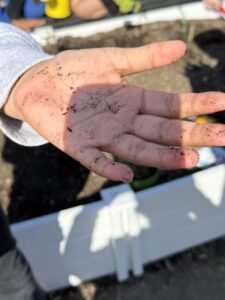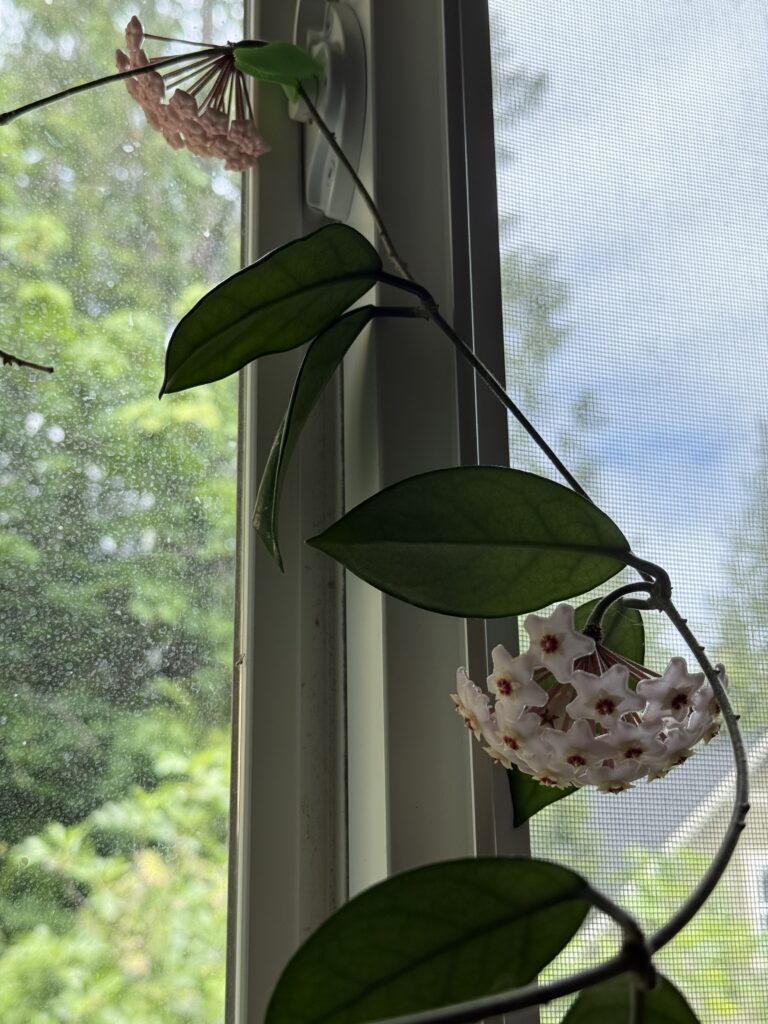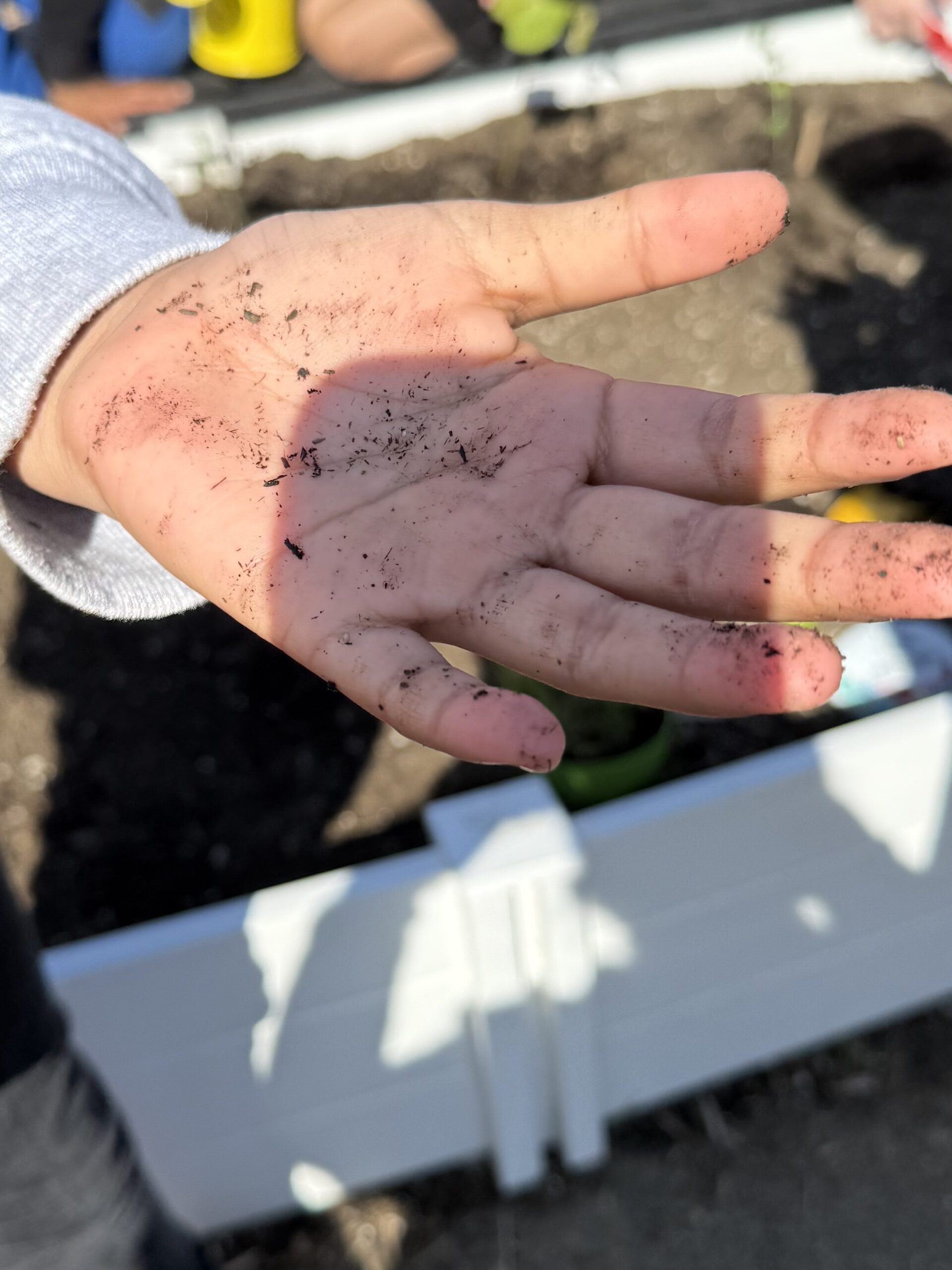I have been teaching all my life. I have been learning longer.
I started teaching because I find learning joyful, and I love to share that joy.
As I teach, I learn – an eternal gift that moves both ways. Some years, the teaching is hard. Some years, learning is hard. Some years, everything is hard. And some years, joyful years, it all comes naturally.
This past year was a mix; and on some days, beautiful, rare, precious days, I was able to get into a flow state where I somehow managed to balance my energy with the needs of the students and we had a Very Good Day (as the eminent W.t.Pooh might say).
My students were able to help preschoolers almost all year long with reading (we tried for once a week, but of course that didn’t always work out). In the spring we also managed to help a little bit – a very little bit – with their garden. My students grew purple-flower peas, many of which went home, but a few found their way into the preschooler’s garden. And then we helped them plant and water for the rest of the school year. I brought in some bamboo from home and after it had cured a bit we installed it to help hold up the climbers.

We made art when we could, we played games when we had time, we worked hard, we had fun, we learned. I learned.
I have decided to continue the quest to share my joy of learning with another “crop” of students next year, if my health allows it.
And here is where :life: comes back into the equation. My health has been worse than “normal” ever since I had covid in the fall of 2023. And teaching when doing poorly is not as effective.
Long covid is an ongoing burden. Although it was better recently, a simple upper respiratory virus at the end of May this year triggered severe asthma attacks for several weeks, until in the final three days of school, I HAD to take the afternoons off.
Still, I am planning on returning next year!
If my health allows it. I had been getting better. Energy was returning, a sense of my own efficacy as a teacher and a partner and a parent was returning, my ability to think and plan was returning, and there were even many days that I could come home after teaching and not take a nap…
But the virus and asthma led to exhaustion, and therefore being unable to get my grading done early (or even on time) was inconvenient, compounded by the disappointment of not having the energy to finish getting the classroom fully organized by the end of the year, and the strain of trying to give the students a great end to their year despite their natural tendency to fall apart as summer approaches. It was “stressful.” It does make me question whether I can make it through another year.
Still, I want to teach.
I am determined to NOT spend my summer planning and working on teaching tasks. But I am excited about next year, and have ideas for how to make things smoother if I don’t feel well – or if I need a sub for more than a day or two. So…
- Finish recovering from “whatever this is” and focus on Tom while I get the garden, sewing, and house in order. In that precise order!
- Use online resources to plan and prepare materials for the first 3-4 units in ELA and Math. Including:
- Daily Routines and “flow:” Entry, exit tickets, independent moments, end-of-day.
- ESL/Slingerland/CAFE plan – establish routines/flow that supports VOCABULARY acquisition alongside Orton-Gillingham-based instructional methodology and a student-led independent learning time. I know all three systems, and have integrated them in the past but need to retool based on new materials. I will be creating high-impact anchor words, concepts, and phrases for the students to copy and learn by heart. Going along with this, scour the units for ideas for: REALIA, VIDEOS, HANDS-ON, , GAMES, ART, MUSIC, MOVEMENT
- ORTHOGRAHY plan (phonemics, phonics, and spelling): 5 1st-grade words (review, not reteaching patterns to class), 10 2nd-grade words (review, reteaching specific graphemes that map to single phonemes). Later, will add 5 high-use vocabulary words found in the texts, not necessarily those indicated in the manual/workbook.
- WRITING plan – Review the readings as mentor texts, and choose strategically how to use language to convey ideas (first lesson), how to organize thoughts (sequencing/chronology), how to add adjectives (color!) to details [all this is the first reading unit] and then move into opinion writing and build in how to cite another author starting in unit 2 (nonfiction). Will have a “fine tune conventions” mini lesson weekly and emphasis on that topic when reviewing written work in all areas.
- Working with vocabulary acquisition, weekly GRAMMAR focus – can I find an easy way to tie this into the reading and writing?
- Strategically mark the HIGH-IMPACT focus of units/lessons and work pages for both ELA and Math. Look specifically for cross-content learning. Pre-write daily and weekly TARGETs to post using the mini-projector.
- Take the three courses/workshops I have already signed up for (two 4-day courses in July, a Saturday in August). And then no more pre-planned days…
- Send Welcome letters as early as possible with information about what to bring to open house (tissues and wipes; pencil case/box) and what to leave at home always (toys, markers, scissors, erasers, pencils, hand sanitizer, scented products). Include note on my allergies and request no gifts to me other than art and writing by students. ALSO As part of welcome letter: Ask for volunteers to pull and organize the specific pages from the ELA workbooks in advance. It’s a task I had to do because I couldn’t think far enough ahead this year – but the size of the workbooks and the number of pages we end up NOT doing is discouraging to 8-year olds! So volunteers can help. Possibly even on the day before school starts!
- Create a binder for my desk: emergency notes, basic student info for emergencies (no addresses or phones). Prepare the basic journal set-up of what we actually do each day, and sub notes (rework this with tabs and include at back of teacher binder). Put masters for emergency absences in binder.
- Set aside the first three weeks of school very deliberately to establish routines, complete September benchmarks, and get to know the new students and their families. I will NOT rush into anything this year…
- Arrange for a “family night” at end of September or early October for families to visit the classroom in the evening with their children to see the room and have students describe their day. An informal chance to ask questions, see the materials, and arrange for individual meetings.
I am sure there are many other tasks I could list, but these are more than enough. Once my energy is back, I hope to spend mornings in the garden and working on the computers, and afternoons sewing (lower energy needed). And I want to spend every possible minute doing things for my family and friends for a change…
One of the lessons I seem to learn (and forget) every year is that while my students and work are important, and rightfully take priority during the school day, my family and friends are just as important. So I hope that pre-loading high-impact tasks over the summer will allow me to start the year and stay ahead so illnesses won’t derail me (again).
Life is important and precious. Teaching will happen no matter where I am, and so will learning. So while I have professional obligations and practices, my focus is going to be on making life better for those around me. And that means, taking care of myself.

The hoya (wax plant) my mother-in-law gave me after the house fire in 2013 is finally in the right location. For the first time, it has bloomed twice in the same season – and for the first time, there are two blooms simultaneously!

